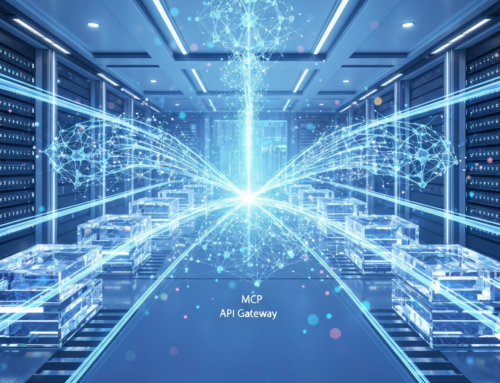The Dawn of Automation: Why AI is Your Next Business Growth Engine
The landscape of modern business is being fundamentally reshaped by artificial intelligence, making AI Automation Business Success not just an aspiration, but a strategic imperative. From enhancing daily operations to unlocking entirely new avenues for growth, AI is transitioning from a futuristic concept to a present-day reality driving tangible results. Businesses leveraging AI are not just optimizing; they’re reinventing how they operate, engage with customers, and innovate at an unprecedented pace.
Recent insights from the Anthropic Economic Index report highlight the rapid, yet uneven, adoption of AI across industries and geographies. While consumer and employee usage has surged, enterprise deployment through APIs shows a strong focus on automation for tasks like coding and administration. This indicates that organizations are actively seeking ways to integrate AI not merely as a tool, but as a core component of their operational fabric, capable of working alongside or even on behalf of human teams.
Beyond Efficiency: The Strategic Imperative for AI Automation
While efficiency gains are often the initial draw, the true power of AI automation extends far beyond simple cost reduction. It represents a strategic imperative for businesses aiming for sustainable competitive advantage. As highlighted by Roland Berger’s analysis on AI agents, we are moving from basic task automation to the rise of sophisticated, self-directed digital entities. These AI agents possess perception, decision-making (often powered by Large Language Models or LLMs), and the ability to take action across diverse systems to achieve complex goals.
The economic potential is staggering. McKinsey’s research estimates that generative AI alone could add between $2.6 trillion and $4.4 trillion annually to the global economy. This represents a 15 to 40 percent increase in the overall impact of all artificial intelligence, fundamentally changing the anatomy of work by automating 60 to 70 percent of employee time. This shift particularly impacts high-wage knowledge workers, necessitating a fresh look at workforce development and strategic planning.
AI Agents are not just tools; they are autonomous digital collaborators, transforming how work is done, how decisions are made, and how value is created.
This transformative potential underscores the need for businesses to adopt a forward-thinking approach. Companies must consider how AI can not only streamline existing processes but also enable new business models, enhance decision quality through data-driven insights, and foster adaptive problem-solving in dynamic environments.
Crafting Your Blueprint for AI Automation Business Success
Building a successful strategy for AI automation is a multi-faceted endeavor that requires careful planning and a holistic approach. It’s not merely about deploying technology, but about reshaping your organization’s business model and aligning its culture, goals, and resources. Harvard Business School emphasizes that an effective AI business strategy involves six key steps:
- Understand Business Objectives and Needs: Start by defining how AI directly contributes to your overarching business goals. Employ an “AI-first scorecard” to assess organizational readiness across AI adoption, architecture, and capability, identifying gaps and prioritizing actions aligned with long-term objectives.
- Conduct a Data Audit: AI thrives on data. A thorough audit of your data infrastructure is crucial to evaluate data quality, accessibility, and governance. This step helps identify and eliminate “data silos” – disconnected data across departments – to create an integrated infrastructure capable of supporting AI at scale.
- Develop an Ethical Framework: As AI becomes more pervasive, ethical considerations surrounding data privacy, bias, and transparency are paramount. Establish clear ethical standards from the outset to avoid legal violations, maintain customer trust, and prevent reputational damage.
- Choose the Right AI Technologies and Tools: Select AI technologies (such as machine learning platforms, natural language processing tools, or robotic process automation) that directly address your identified business problems. Begin with small-scale testing to validate effectiveness before broader implementation.
- Prioritize AI Skills Development: The success of AI initiatives hinges on a skilled workforce. Identify any skill gaps in areas like machine learning, data science, and data engineering. Invest in upskilling existing employees or recruiting new talent to ensure your team is equipped to handle AI’s complexities.
- Get Employee Buy-In: Organizational transformation is as much about people as it is about technology. Clearly communicate the vision for AI adoption, emphasizing its benefits and positive impact on employee roles. Foster a culture of continuous learning and adaptability, as technology, data, and the broader ecosystem are constantly evolving.
IBM’s approach to building an AI strategy further emphasizes the importance of exploring various AI technologies, assessing organizational capabilities, defining clear objectives, and building a comprehensive roadmap that considers data, algorithms, infrastructure, and talent.
The Intelligent Toolkit: Harnessing AI Agents, LLMs, and Custom Solutions
At the heart of modern AI automation lies an intelligent toolkit comprising powerful technologies like AI agents, large language models (LLMs), and custom-built solutions. These tools, when effectively integrated, can orchestrate complex workflows and drive significant business impact.
Understanding AI Agents and LLMs
- AI Agents: These are sophisticated software programs that can observe their environment, plan actions based on goals, and execute those actions autonomously. They learn and adapt over time, retaining memory and context across multi-step processes. For instance, a consumer goods company used an AI agent to optimize global marketing campaigns, reducing a week-long project for six analysts to an hour for a single employee working with the agent.
- Large Language Models (LLMs): LLMs serve as the “brain” for many AI agents, enabling them to reason, understand natural language, and generate human-like text. They are crucial for tasks involving comprehension, summarization, content creation, and nuanced decision-making.
- Custom Solutions: Beyond off-the-shelf tools, custom AI solutions tailored to specific business needs often provide the most significant competitive advantage. These can involve bespoke algorithms, unique data integrations, and specialized AI models designed to solve particular challenges.
The synergy between these components allows for “Intelligent Automation” (IA), where AI enhances traditional automation by learning and finding solutions autonomously. IA is becoming essential as global challenges outpace human response capabilities, offering long-term strategic value beyond short-term efficiency gains.
Implementing Vision: From AI Strategy to Tangible Business Impact
Translating an AI strategy into tangible business impact requires a clear implementation roadmap. Microsoft’s “AI-powered success” initiative showcases over 1,000 stories of customer transformation and innovation, demonstrating how AI solutions are driving measurable outcomes across four key areas:
- Enriching Employee Experiences: Automating repetitive tasks frees employees for more complex, creative, and valuable work, boosting job satisfaction and sparking innovation.
- Reinventing Customer Engagement: AI creates personalized customer experiences, delighting audiences while streamlining support.
- Reshaping Business Processes: Virtually any business process, from marketing to supply chain, can be reimagined with AI, leading to optimization and new growth opportunities.
- Bending the Curve on Innovation: AI accelerates creative processes and product development, reducing time to market and enabling differentiation.
A crucial aspect of implementation is understanding the balance between automation and augmentation. The EPOCH Methodology provides a framework for this, quantifying human capabilities (Empathy, Presence, Opinion, Creativity, Hope) that are less susceptible to AI replacement. This helps executives strategically decide which tasks to automate and where to augment human expertise, ensuring sustainable competitive advantage.
Strategic Approaches to AI Integration
The EPOCH methodology identifies four strategic approaches, each influencing the speed of AI adoption:
- Status Quo: Minimal AI integration, suitable for highly human-centric tasks.
- Augmentation-led: AI enhances human capabilities, allowing humans to focus on higher-value work.
- Human in the Loop: AI performs tasks with human oversight and approval, particularly for sensitive operations.
- Displacement-Driven: AI fully automates tasks, with humans potentially shifting to new roles.
The key lies in orchestrating thoughtful transitions that recognize both technological potential and human value, rather than pursuing wholesale automation. This adaptive approach ensures that AI deployment aligns with both technological maturity and internal organizational readiness.
Measuring Success and Scaling AI Automation Initiatives
To truly achieve AI Automation Business Success, organizations must not only implement AI but also rigorously measure its impact and strategize for scalable growth. The State of AI report by McKinsey underscores that tracking well-defined Key Performance Indicators (KPIs) for AI solutions is crucial for demonstrating bottom-line impact. This involves moving beyond initial pilot projects to enterprise-wide integration that shows meaningful returns on investment.
Scaling AI initiatives also demands addressing potential roadblocks. A lack of sufficient, high-quality data, limited AI knowledge within the organization, misalignment between AI initiatives and business goals, and a scarcity of AI talent are common challenges. To overcome these, companies need to:
- Establish Data Governance: Ensure data quality, accessibility, and security to fuel AI models effectively.
- Invest in AI Literacy: Provide training and foster a culture of continuous learning to build internal expertise and encourage employee buy-in.
- Align Strategy: Continuously connect AI initiatives to core business objectives to maintain leadership support and demonstrate value.
- Develop Talent Pipelines: Recruit skilled data scientists and machine learning experts, or reskill existing employees to meet evolving demands.
The emphasis should be on an incremental, phased approach to adoption. Starting small, identifying process bottlenecks, and leveraging functional intelligence before large-scale implementation allows for continuous feedback and refinement. As the AI infrastructure matures, considering a Unified Intelligent Automation Platform (UIAP) can further integrate data, automation, intelligence, and visualization into a cohesive system, enhancing operational efficiency and market adaptability.
The Future is Now: Evolving with Advanced AI and Agentic Workflows
The rapid evolution of AI technology means that the future of business is increasingly intertwined with advanced AI capabilities and agentic workflows. As noted by MIT, the focus is shifting towards the organizational and managerial implications of AI, emphasizing how collective intelligence of people and computers can solve previously impossible business problems. This vision goes beyond simply deploying tools; it involves fostering a symbiotic relationship where humans and AI agents collaborate seamlessly.
Advanced AI is enabling new levels of human-AI collaboration through:
- Adaptive Problem Solving: AI agents can navigate ambiguity, adapt to unforeseen changes, and learn from outcomes to improve their effectiveness over time.
- New Business Models: By drawing upon vast amounts of information and applying advanced computational power, AI agents can uncover novel insights and help generate concepts for new offerings, leading to innovative business models.
- Ecosystems of Agents: The trajectory points towards interconnected networks of specialized agents, or “Agentic Meshes,” communicating through standardized protocols to tackle problems of scale and intricacy that would be impossible for single agents or human teams.
This necessitates a continuous reassessment of AI strategy, adapting to new insights and emerging opportunities. Businesses that actively monitor AI advancements, embrace ethical guidelines, and prioritize ongoing training will be best positioned to thrive in this dynamic environment.
Unlock Your Potential: A Call to Action for AI-Driven Growth
The journey towards full AI Automation Business Success is an ongoing process of innovation, adaptation, and strategic integration. For businesses looking to unlock exponential growth, the time to act is now. By embracing AI as a core strategic driver, focusing on a human-centric approach, and continuously evolving with technological advancements, organizations can transform their operations, enhance customer and employee experiences, and secure a leading position in the future economy.
Leverage the insights gained from leading research and real-world implementations to craft your unique blueprint. Prioritize robust data strategies, invest in comprehensive AI literacy for your workforce, and build flexible, secure systems that can scale with your ambitions. The rewards—hyper-efficiency, enhanced decision-making, adaptive problem-solving, and innovative business models—are substantial for those who dare to lead in the age of AI.
Ready to unlock your business’s AI potential? Partner with Idea Forge Studios. Schedule a personalized discussion to explore how our web development, e-commerce, and digital marketing expertise can drive your growth. Prefer to call? Reach us at (980) 322-4500 or email us at info@ideaforgestudios.com.








Get Social